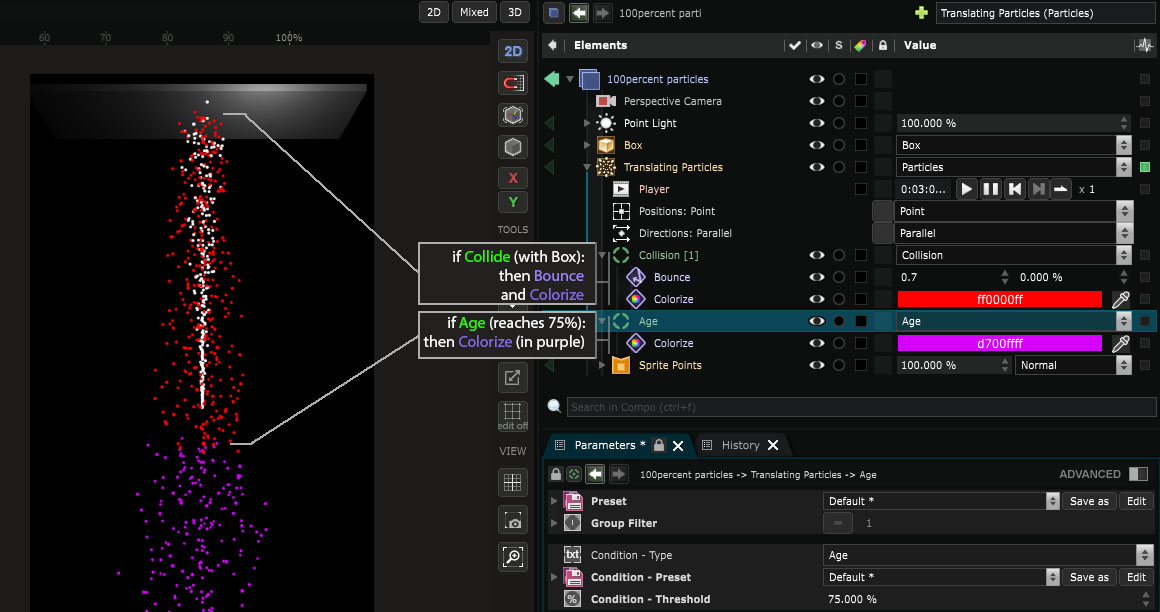Particle Rule
Defines the behaviour of particles
A rule is used to define behaviours for your particles.
There are two type of rules: event based and continuous.
They can be used, for example, to emit a trail of particles behind some other particles. They can also be used to explode a particle into hundreds of others, with different colors and behaviours themselves.
Rules can also be used to define the physics of a particle, to make it bounce off objects in the scene, or to destroy it upon impact.
A very important concept in particles rules is the particle’s Group.
When created, a particle is in the Group [1]. You can increase that Group ID using a
Change Group
(in case of the
Emit
, a
Change Group
will automatically be added to increase the particles Group ID).
If you want to make a particle split once, when hitting a surface, the rule should be applied only on the first Group. Then, you should increase the Group when splitting to ensure it doesn’t happen again.
Particles Group ID will always be indicated in the Element Tree inside of the particle Rule name with a [n] annotation. Particles Group Change of ID will be annotated with a [+n] or a [-n] mark, so you shouldn’t be lost. At least we hope.
Here is a little schematic:
Here is an exampe using particle rules:
Read Group 3d Mask for further details on particles Groups.




